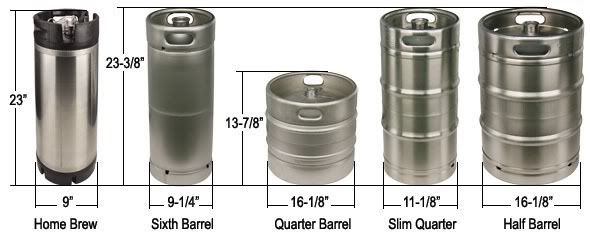mushhawk wrote:I didn't realize that you had to have the beer under CO2 pressure for 3 weeks if carbonating it with a CO2 tank. I thought you just hooked it up to the CO2 just before drinking it..
It takes some time for the beer to absorb the carbonation. That's what's happening with any carbonation technique is your forcing CO2 gas to be absorbed by the liquid.
mushhawk wrote:If I naturally carbonate it with priming sugar, and then hook it up to a CO2 tank, will it over-carbonate?.
No it will not over carbonate provided that your regulator is set to the proper PSI. As per the chart and the explanation below.
mushhawk wrote:Also, I don't quite understand the whole volumes calculation thing...
Volumes of a gas is a measure of how much gas you have, just like a Pint is how much liquid you have. It is not a measure of weight but how much space the gas takes up, it's measured in Liters in the metric system. Since gasses are compressible the volume of a gas changes under different pressures and/or temperatures with out physically having any more or less of that gas. Think of a spring when you squeeze it together it looks smaller but you don't have any less spring. So how this applies is we measure how much CO2 we have dissolved in the beer, the average is about 2.5 volumes. Since the volume of the gas changes as temperature changes you have to adjust the pressure the of gas in order to maintain a constant volume.
What you need to do is figure out the temperature your fridge that the beer is stored in. We will pretend it's 36 Fahrenheit. We'll also pretend that you want 2.47 volumes of gas in your beer. We go to this chart.
http://www.kegerators.com/carbonation-table.php
On the left side we will go to the temperature (36) then trace that row right until we get to the desired volumes of CO2 (2.47), then follow that collum up to see what PSI we should set the regulator to. You should get 10.
All this being said it still sounds like you're trying to use priming sugar, and I say don't do it. For most beers, especially when starting out in the hobby, there is no benefit and only risks to naturally carbonating in the keg. Natural carbonation creates more yeast sediment in the keg which will lead to cloudy beer. It's difficult to fine tune things as there are more variables in the equation, such as yeast activity that itself is dependent on even more variables. I suggest getting everything figured out with a few variables first.

